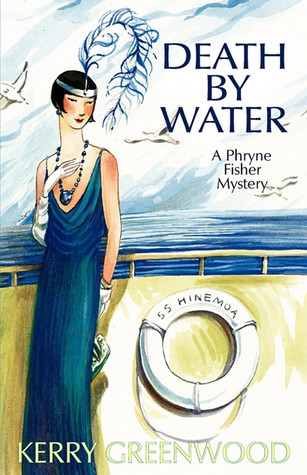 Death by Water (Phryne Fisher, #15) by Kerry Greenwood
Death by Water (Phryne Fisher, #15) by Kerry Greenwood Formats available: hardcover, paperback, ebook, audiobook
Series: Phryne Fisher #15
Pages: 250
Published by Poisoned Pen Press on May 1, 2010 (first published 2005)
Purchasing Info: Author's Website, Publisher's Website, Amazon, Barnes & Noble, Kobo, Bookshop.org
Goodreads
The nice men at P&O are worried. A succession of jewellery thefts from the first class passengers is hardly the best advertisement for their cruises. Especially when it is likely that a passenger is the thief. Phryne Fisher, with her Lulu bob, green eyes, cupid's bow lips and sense of the ends justifying the means, is just the person to mingle seamlessly with the upper classes and take on a case of theft on the high seas - or at least on the S.S. Hinemoa, on a luxury cruise to New Zealand. She is carrying the Great Queen of Sapphires, the Maharani, as bait. There are shipboard romances, champagne cocktails, erotic photographers, jealous swains, mickey finns, jazz musicians, blackmail and attempted murder, all before the thieves find out - as have countless love-smitten men before them - that where the glamorous and intelligent Phryne is concerned, resistance is futile.
My Review:
In between yesterday’s big and marvelous epic fantasy (Spinning Silver) and tomorrow’s big series-opening epic fantasy (The Magic of Recluce) I found myself looking for something less weighty that I knew from the off would be quick to get immersed in. Spinning Silver was wonderful but left me with an epic book hangover.
So naturally I turned to something, or rather someone, who always manages to sweep me back into her world at the drop of a hat, the lighting of a gasper, or the discovery of yet another dead body.
Of course, I’m speaking of Miss Phryne Fisher. The books, while in some ways markedly different than the TV series, always serve up a delicious repaste of Phryne’s signature style, sizzling wit and nose for both finding and solving trouble.
Death by Water was certainly no exception.
This was an interesting story for multiple reasons. This is one of the few cases where the book consists almost entirely of the case. It is also a story where Phryne is operating far away from her usual base of operations, and without most of her cast of regulars. And the cruise ship itinerary as described in the book is fascinating.
She boards the P&O cruise ship SS Hinemoa for a luxury cruise to New Zealand with only the redoubtable Dot at her side. Phryne has chosen to accept this case from the cruise line to discover who is stealing expensive jewels from its first-class passengers so that she can escape a period of more than the usual chaos at her house in St. Kilda.
The thefts have been cunning. The jewel thief or thieves have managed to make some of their heists in the middles of crowded dancefloors with no one being the wiser. It’s giving the cruise line a black eye in the publicity department, not to mention costing them a pretty penny in reparations. And it has to stop.
So Phryne boards the ship with a stunner of a sapphire and a tragic story of a curse to go with it. The games begin almost immediately, as the thieves make attempts on her stateroom and both Phryne’s and Dot’s possessions and eventually persons.
That makes it personal.
But just as Phryne begins to put all the pieces together, murder enters the scene. Are the crimes connected, or are there two crime sprees aboard this one ship? With the help of the ship’s cat Scragger, Phryne is able to reveal all. Or almost all. Or all that needs to be revealed.
Escape Rating B+: I went looking for fun, and I found it. And just like Phryne drinking a restorative brandy, I feel ready to tackle whatever comes next.
This is one of the stories that was not filmed, and I understand why. At the same time, I’m sorry it wasn’t – the sets and the costumes would have been glorious!
The case here turns out to be unusually straightforward. The ship is a closed community, and there aren’t a lot of options for misdirection. Phryne, as usual, solves the problem with intelligence rather than forensics. She studies the people involved, looks at the possible motives and opportunities, and figures out who is acting out of character, even if she can’t always tell why.
But Phryne is alone, except for Dot of course, on this trip. This wasn’t a case where the usual gang would have been all that helpful, and they weren’t missed as they have been in other stories. Cec’s niece Lizbeth, Navigation Officer Green and others do end up filling the places of Phryne’s assistants, and for once it works well. It helps that Phryne’s fellow first-class passengers are a colorful lot – to say the least!
The descriptions, both of shipboard life on a first class cruise and of cruise tourism in New Zealand in the 1920s are marvelous. The reader feels as if they are there on the ship, with all its gossip, pampering, troublemaking and ennui. If it weren’t for the frequent attempts on Phryne’s and Dot’s lives, it would seem like quite a restful trip! And if you enjoy Phryne’s singular voice, it’s a lovely journey.

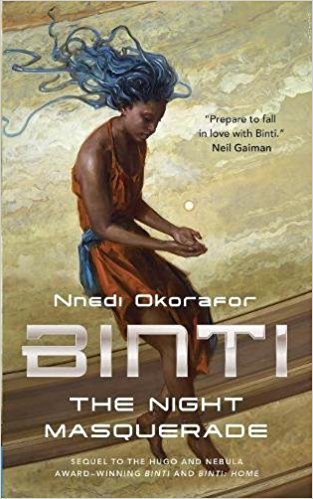 The Night Masquerade (Binti, #3) by
The Night Masquerade (Binti, #3) by 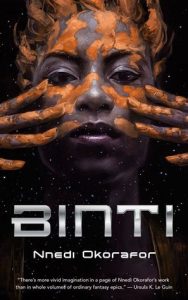 Admittedly, one reason why I hadn’t read The Night Masquerade already was because as much as I adored the first book,
Admittedly, one reason why I hadn’t read The Night Masquerade already was because as much as I adored the first book, 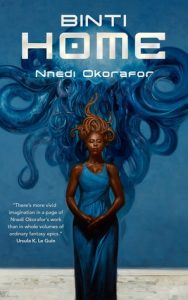 In Binti, we saw her first, sometimes tentative steps into the wider universe, not in spite of but because of the tragedy that she survives aboard Third Fish. In Home, Binti is searching for who she is now, trying to harmonize all of the various parts of herself that she has discovered or that she has absorbed. And she flails around a bit. (Don’t we all at 17?)
In Binti, we saw her first, sometimes tentative steps into the wider universe, not in spite of but because of the tragedy that she survives aboard Third Fish. In Home, Binti is searching for who she is now, trying to harmonize all of the various parts of herself that she has discovered or that she has absorbed. And she flails around a bit. (Don’t we all at 17?)
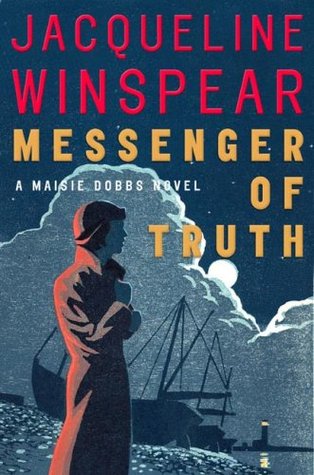 Messenger of Truth (Maisie Dobbs, #4) by
Messenger of Truth (Maisie Dobbs, #4) by 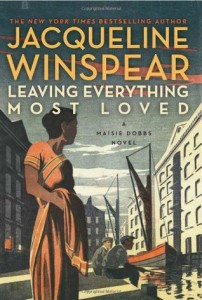 I always look forward to this tour, so I decided to do my own “Month of Maisie” this year. Hence today’s review of Messenger of Truth. Eventually I’ll catch up to myself, as I started reading with
I always look forward to this tour, so I decided to do my own “Month of Maisie” this year. Hence today’s review of Messenger of Truth. Eventually I’ll catch up to myself, as I started reading with 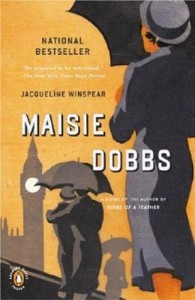 Escape Rating B+: This series as a whole are excellent historical mysteries. If you like the genre and haven’t read them yet, start with the first book,
Escape Rating B+: This series as a whole are excellent historical mysteries. If you like the genre and haven’t read them yet, start with the first book, 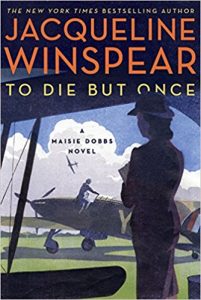 Maisie herself is always a fascinating character. Her life has made her the ultimate outsider, not part of any of the social classes, but able to operate in all of them. At the same time, this is a case where Maisie herself is working through multiple crossroads, deciding whether she wants a traditional life after all, or to continue down the independent road she has chosen. And just how much of her war it is time to put behind her – even as the next war looms on the horizon.
Maisie herself is always a fascinating character. Her life has made her the ultimate outsider, not part of any of the social classes, but able to operate in all of them. At the same time, this is a case where Maisie herself is working through multiple crossroads, deciding whether she wants a traditional life after all, or to continue down the independent road she has chosen. And just how much of her war it is time to put behind her – even as the next war looms on the horizon.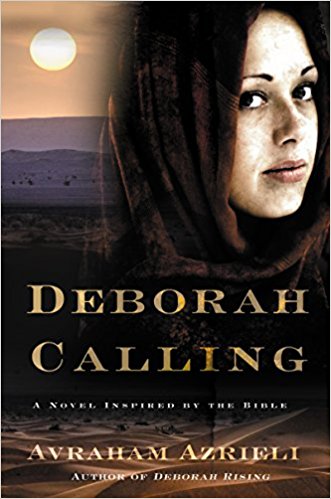 Deborah Calling: A Novel Inspired by the Bible by
Deborah Calling: A Novel Inspired by the Bible by  Deborah Calling picks up right where
Deborah Calling picks up right where 
 Shelter My Heart (Caught Up in Love, #2) by
Shelter My Heart (Caught Up in Love, #2) by 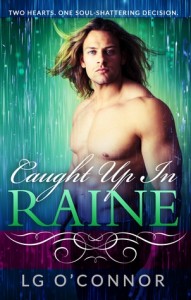 I picked this book because I absolutely loved what turned out to be the first book in this series.
I picked this book because I absolutely loved what turned out to be the first book in this series.  His sister Lettie blames that on a combination of white-knight syndrome and testosterone poisoning, with an emphasis on the testosterone poisoning. She is often the person pushing them together, and definitely the one pushing Devon to reveal all before it’s too late.
His sister Lettie blames that on a combination of white-knight syndrome and testosterone poisoning, with an emphasis on the testosterone poisoning. She is often the person pushing them together, and definitely the one pushing Devon to reveal all before it’s too late.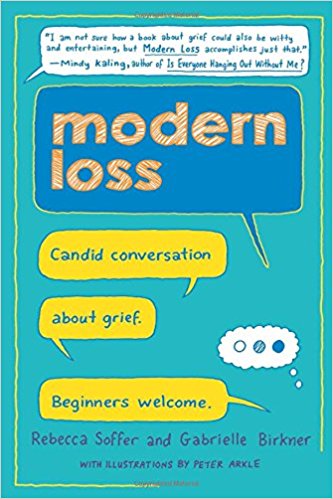 Modern Loss: Candid Conversation About Grief. Beginners Welcome. by
Modern Loss: Candid Conversation About Grief. Beginners Welcome. by 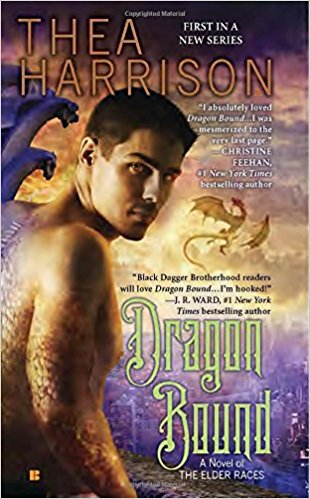 Dragon Bound (Elder Races, #1) by
Dragon Bound (Elder Races, #1) by 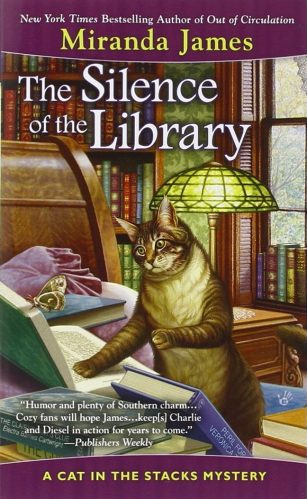 The Silence of the Library (Cat in the Stacks, #5) by
The Silence of the Library (Cat in the Stacks, #5) by 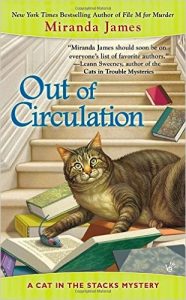 I opened The Silence of the Library immediately after I finished
I opened The Silence of the Library immediately after I finished 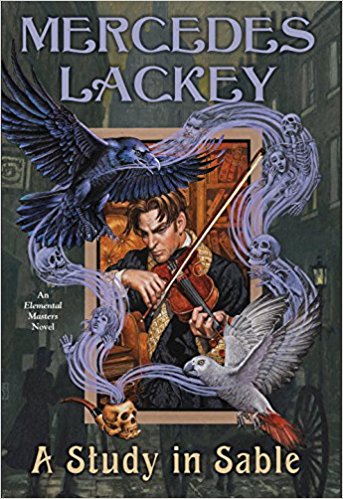 A Study in Sable (Elemental Masters #11) by
A Study in Sable (Elemental Masters #11) by 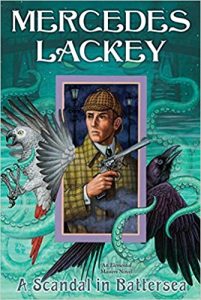 I read A Study in Sable AFTER I finished
I read A Study in Sable AFTER I finished 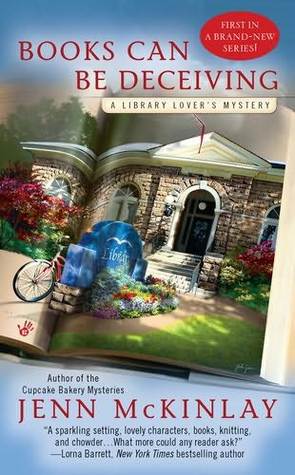 Books Can Be Deceiving (Library Lover's Mystery, #1) by
Books Can Be Deceiving (Library Lover's Mystery, #1) by